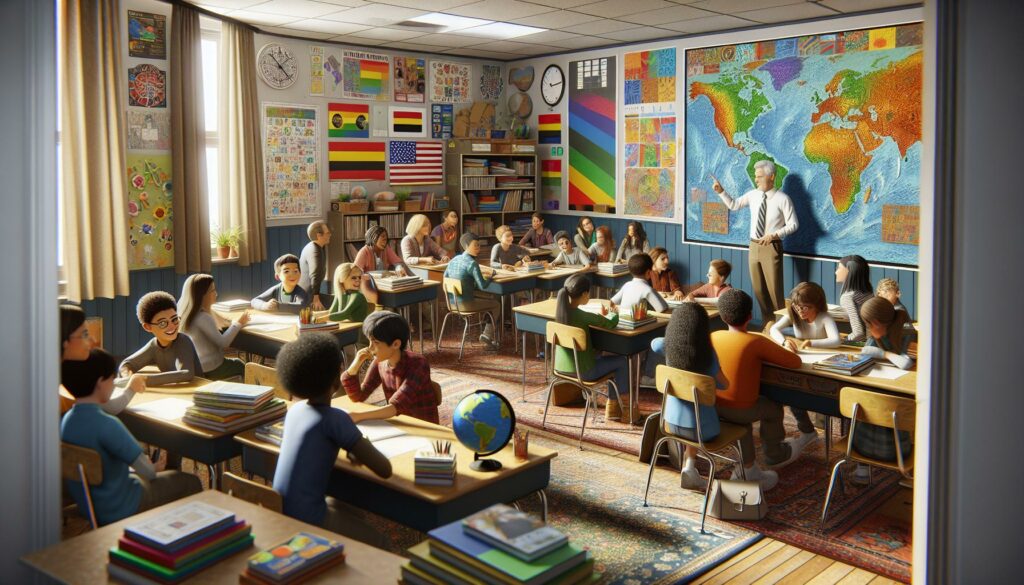When it comes to public education, the quality can vary significantly from state to state. As a parent or educator, knowing which states excel in K-12 education can help you make informed decisions about where to live or how to advocate for improvements in your local schools. In this article, I’ll explore the best states for public education based on key factors like funding, student performance, and teacher quality. Whether you’re seeking the ideal environment for your child’s education or simply curious about how your state stacks up, this guide will provide valuable insights into the educational landscape across the country. Let’s dive in and discover which states truly prioritize their students’ futures.
- Variability in Education Quality: Public education quality varies widely across the U.S., influenced by state policies, funding, and community involvement.
- Importance of Funding: States that allocate higher funding per student, like Massachusetts and New Jersey, generally see better educational outcomes, including improved resources and smaller class sizes.
- Significance of Teacher Quality: High teacher quality, driven by rigorous certification and ongoing professional development, is critical for student success, as shown in states like Florida and Massachusetts.
- Evaluating Performance: Academic performance measures, such as standardized testing, are essential for identifying strong educational systems and areas needing improvement.
- Community Involvement Matters: Strong partnerships between schools and local communities enhance student support and engagement, positively affecting educational success.
- Challenges Persist: Disparities in funding and access to quality education remain significant challenges, particularly impacting low-income and rural students.
Best States for Public Education K-12
Public education in the U.S. comprises a diverse system governed by individual states, leading to significant variations in quality and resources. Each state has its own education policies, funding mechanisms, and performance metrics, which causes disparities in K-12 education outcomes. The effectiveness of public education is influenced by factors such as funding levels, teacher qualifications, curriculum standards, and community involvement.
Funding plays a critical role in shaping education. States allocate different amounts per student, affecting school facilities, resources, and teacher salaries. Schools in well-funded districts often boast advanced programs, smaller class sizes, and more extracurricular activities, enhancing student engagement. Teacher quality also impacts student success; states with stringent certification requirements and ongoing professional development for educators tend to have better outcomes.
Student performance is a crucial measure of educational quality. States frequently assess student achievement through standardized tests and assessments. These evaluations provide insight into academic proficiency and highlight areas for improvement. High-performing states often implement innovative teaching strategies and use data-driven approaches to personalize learning experiences.
Community involvement contributes significantly to educational success. States that foster partnerships between schools and local organizations often witness higher engagement levels from families and communities. This engagement can lead to increased support for schools, volunteerism, and additional resources for students.
Understanding these dynamics is essential for parents and educators aiming to navigate the complex landscape of public education in the U.S. Evaluating key factors helps identify states that prioritize their students’ futures and offer robust K-12 education systems.
Criteria for Evaluating Public Education
Evaluating public education involves key criteria that significantly influence the quality of K-12 schooling. I focus on academic performance, funding and resources, and teacher quality to assess how states fare in their education systems.
Academic Performance
Academic performance serves as a primary indicator of a state’s educational effectiveness. States often use standardized tests to measure student proficiency in subjects like math, reading, and science. For instance, the National Assessment of Educational Progress (NAEP) provides a benchmark, showing that students in states such as Massachusetts and New Jersey consistently score above average. Performance metrics reveal strengths and weaknesses, guiding policymakers in identifying areas for improvement.
Funding and Resources
Funding and resources significantly impact educational quality. Each state allocates varying amounts per student, affecting classroom sizes, technology access, and extracurricular opportunities. For example, states like Connecticut and Vermont lead in spending per pupil, which correlates with improved educational outcomes. Adequate funding ensures schools can provide necessary materials and maintain safe, supportive learning environments.
Teacher Quality
Teacher quality directly influences student success. States prioritize teacher certification standards, ongoing training, and professional development programs. For instance, states like Florida and Massachusetts mandate rigorous certification processes, ensuring educators are well-equipped with instructional strategies. High-quality teachers foster student engagement and achievement, making it essential to evaluate teacher support systems when assessing educational quality.
Top States for Public Education K-12
I’ve analyzed some of the best states for public education, focusing on key factors like funding, student performance, and teacher quality. Here are the highlights of three top-performing states.
State A: Overview and Highlights
Massachusetts consistently ranks at the top for K-12 education. The state boasts a high per-pupil funding rate, which fosters well-resourced schools. Massachusetts also excels in student performance, as evidenced by NAEP scores that frequently surpass national averages. The state’s commitment to teacher quality is evident, with rigorous certification processes ensuring educators are among the best in the nation.
State B: Overview and Highlights
New Jersey offers strong public education through comprehensive funding strategies. With one of the highest spending rates per pupil, New Jersey schools provide robust academic programs and extracurricular activities. The state ranks highly in student achievement, particularly in math and reading, driven by well-prepared teachers and effective curricula. New Jersey’s focus on equitable educational opportunities enhances its reputation in K-12 education.
State C: Overview and Highlights
Florida has made significant strides in K-12 education through various reform initiatives. The state combines competitive teacher salaries with strong professional development opportunities, creating an environment for effective teaching. Florida’s K-12 system sees high student performance on standardized tests, driven by data-driven assessments and improved instructional strategies. The emphasis on school choice also fosters competition, encouraging schools to enhance educational outcomes.
Challenges Facing Public Education
Public education in the U.S. faces significant challenges that impact the quality and accessibility of K-12 education across states. Understanding these obstacles is crucial for shaping effective educational policies and practices.
Disparities in Funding
Funding disparities create an uneven educational landscape across states. States allocate different amounts per student, which directly affects resources, facilities, and teacher salaries. For instance, in 2021, New York spent approximately $25,000 per pupil, while Idaho spent around $8,000 per pupil. These discrepancies result in unequal access to educational opportunities, with students in well-funded districts receiving better resources, extracurricular programs, and support services.
Access to Quality Education
Access to quality education remains a pressing issue due to socioeconomic factors and geographic disparities. Low-income families often struggle to find schools that offer robust academic programs and experienced educators. For example, rural districts frequently grapple with teacher shortages, leading to larger class sizes and less personalized instruction. Additionally, students in urban areas may face overcrowded schools, impacting their learning environment. According to the National Center for Education Statistics, approximately 14% of public school students attended schools classified as high-poverty, which correlates with lower academic performance compared to their peers in low-poverty schools.
Choosing the right state for K-12 education can significantly impact a child’s future. States like Massachusetts and New Jersey stand out for their strong academic performance and robust funding. Meanwhile Florida’s reforms show promise in enhancing educational quality and teacher effectiveness.
It’s essential to stay informed about the educational landscape and advocate for improvements where needed. By focusing on the states that prioritize education, we can help ensure a brighter future for our students. The journey toward better public education is ongoing, and every step counts.



